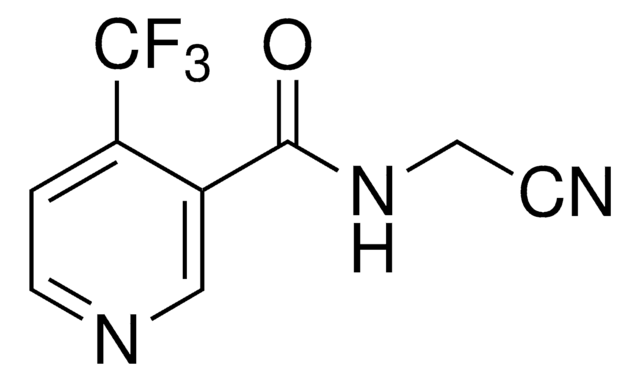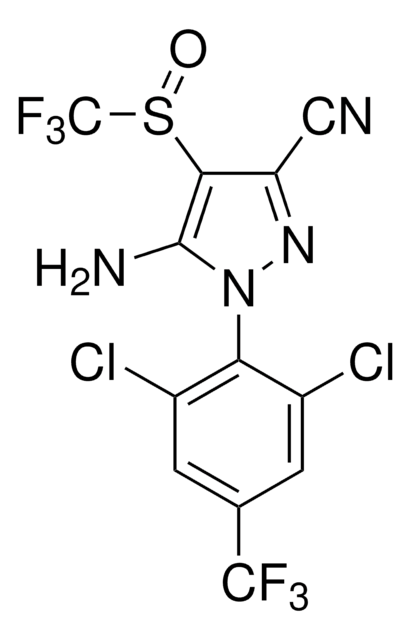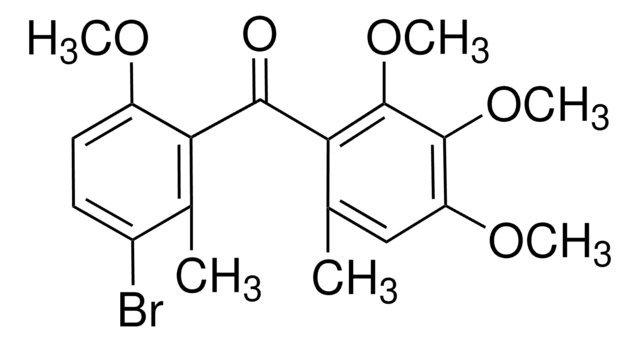37043
Tolfenpyrad
PESTANAL®, analytical standard
Synonym(e):
4-Chlor-3-ethyl-1-methyl-N-[4-(p-tolyloxy)-benzyl]-pyrazol-5-carboxamid, 4-Chlor-3-ethyl-1-methyl-N-{[4-(4-methylphenoxy)-phenyl]-methyl}-1H-pyrazol-5-carboxamid
About This Item
Empfohlene Produkte
Qualität
analytical standard
Qualitätsniveau
Produktlinie
PESTANAL®
Haltbarkeit
limited shelf life, expiry date on the label
Methode(n)
HPLC: suitable
gas chromatography (GC): suitable
Format
neat
SMILES String
CCc1nn(C)c(C(=O)NCc2ccc(Oc3ccc(C)cc3)cc2)c1Cl
InChI
1S/C21H22ClN3O2/c1-4-18-19(22)20(25(3)24-18)21(26)23-13-15-7-11-17(12-8-15)27-16-9-5-14(2)6-10-16/h5-12H,4,13H2,1-3H3,(H,23,26)
InChIKey
WPALTCMYPARVNV-UHFFFAOYSA-N
Suchen Sie nach ähnlichen Produkten? Aufrufen Leitfaden zum Produktvergleich
Allgemeine Beschreibung
Anwendung
Empfohlene Produkte
Rechtliche Hinweise
Signalwort
Warning
H-Sätze
Gefahreneinstufungen
Acute Tox. 4 Inhalation - Acute Tox. 4 Oral - Aquatic Acute 1 - Aquatic Chronic 1
Lagerklassenschlüssel
11 - Combustible Solids
WGK
WGK 3
Flammpunkt (°F)
Not applicable
Flammpunkt (°C)
Not applicable
Choose from one of the most recent versions:
Besitzen Sie dieses Produkt bereits?
In der Dokumentenbibliothek finden Sie die Dokumentation zu den Produkten, die Sie kürzlich erworben haben.
Unser Team von Wissenschaftlern verfügt über Erfahrung in allen Forschungsbereichen einschließlich Life Science, Materialwissenschaften, chemischer Synthese, Chromatographie, Analytik und vielen mehr..
Setzen Sie sich mit dem technischen Dienst in Verbindung.









